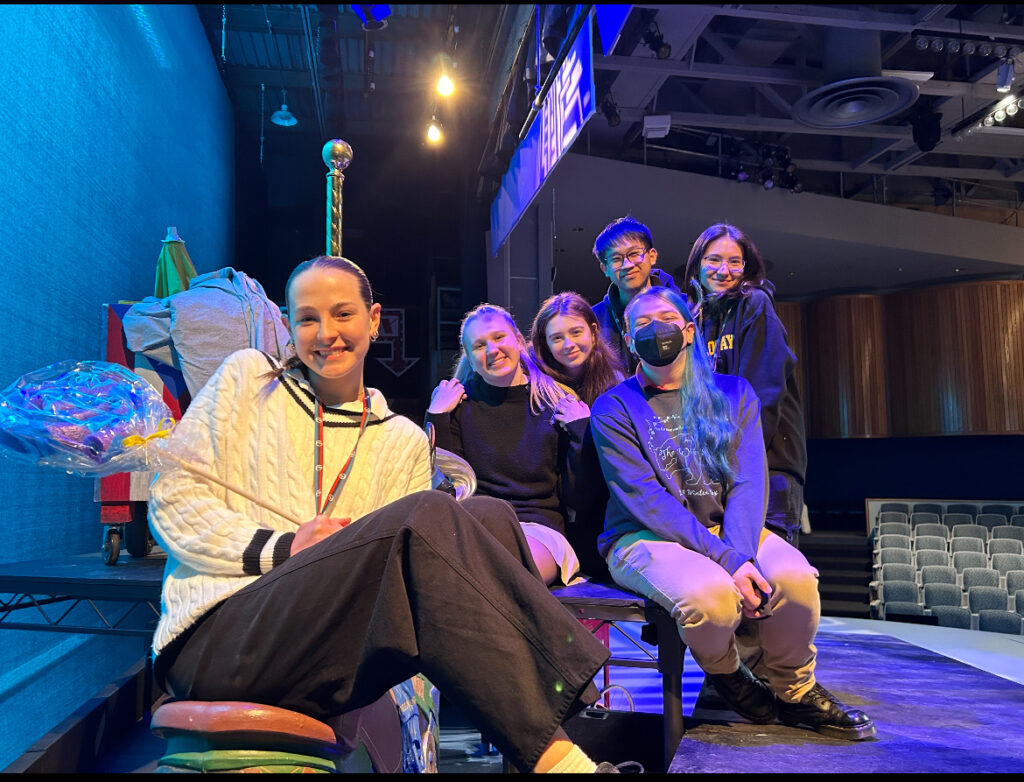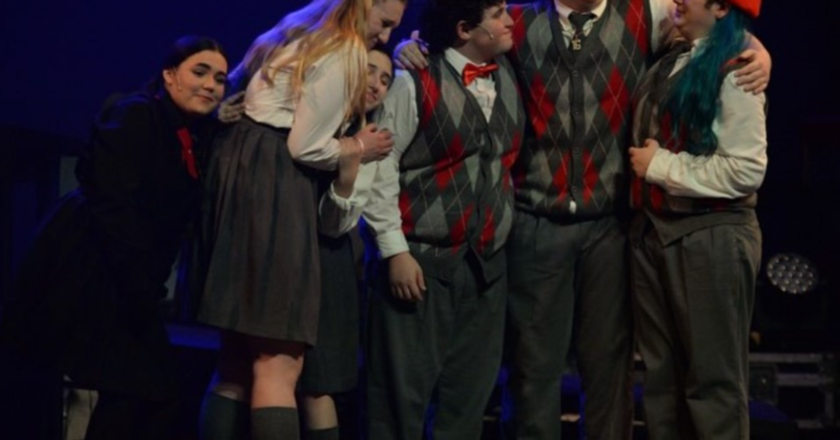This year’s performing arts finale, the annual Spring Concert, took on a brand-new arrangement. Three enthralling evenings featured performances from both the Middle School and Upper School choir, orchestra, and band musicians.
For the first time, a mix of individual performances and combined numbers between the two divisions showcased the strength and direction of GA’s music program.
“I thought it was really nice to be able to play with the middle schoolers,” Concertmaster Angie Wang ’24 said. “I liked the idea of having unity within the orchestra.”
Of course, these performances required plenty of coordination and hard work from ensemble directors and student leaders. Difficulties in finding rehearsal times that worked for so many students and logistics often taken for granted made the cohesiveness of the performances even more spectacular.
“We didn’t start rehearsing with [the Middle Schoolers] until the very last minute, and we were worried that we weren’t even going to fit on the stage,” choir president Kayla Mullen ’24 said. “But we did. It was chaotic at first, but the transitions from our performance to the middle school to all of us went very smoothly.”
Not only was the Spring Concert a tremendous milestone for all, but it also marked the sentimental last performances for graduating seniors. Many have created lasting memories with the program throughout all four years of Upper School.
For Mullen, the choir has been a place to foster her love of music, strive for excellence, and build a close camaraderie with her peers.

“The best part about performances is just being with everybody,” Mullen said. “It gets really hectic during all of our rehearsals, but [during performances] we just enjoy our time together and look forward to doing what we know we’ve been capable of the whole time.”
Wang reminisced about her early days in the orchestra as a violinist.
“When I was younger, I always thought that concertmasters were super cool,” Wang said. “I looked up to them both for their playing skills and also how they were able to form relationships and be friends with everyone in the orchestra regardless of what grade they’re in.”
The culture within these ensembles builds mutual relationships of inspiration and guidance between older and younger students. With a larger age range of students performing together, a more diverse blend of sound parallels the unity of the program.
As students get older and more experienced, especially as seniors, they are prepared to take on leadership roles and give back to their community.
“I think there’s a lot of responsibility that comes with it,” Wang said of her role as the orchestra’s concertmaster. “It’s your job to motivate and get to know everyone.”
The talent and dedication they have given to the ensembles throughout the years have been key contributions to the success of these concerts. With both the Fall and Spring concerts sporting new models this year, and the legacies of the graduating seniors, the school’s music program is poised to play at a crescendo in the coming years.
The joining of the Middle and Upper School performances promises a future of greater harmony and mentorship among students of all ages. As the program experiments further past its interest-nurturing foundation, students can have broader musical exposure, and more opportunities to revel in the joy of collaborative music-making.

